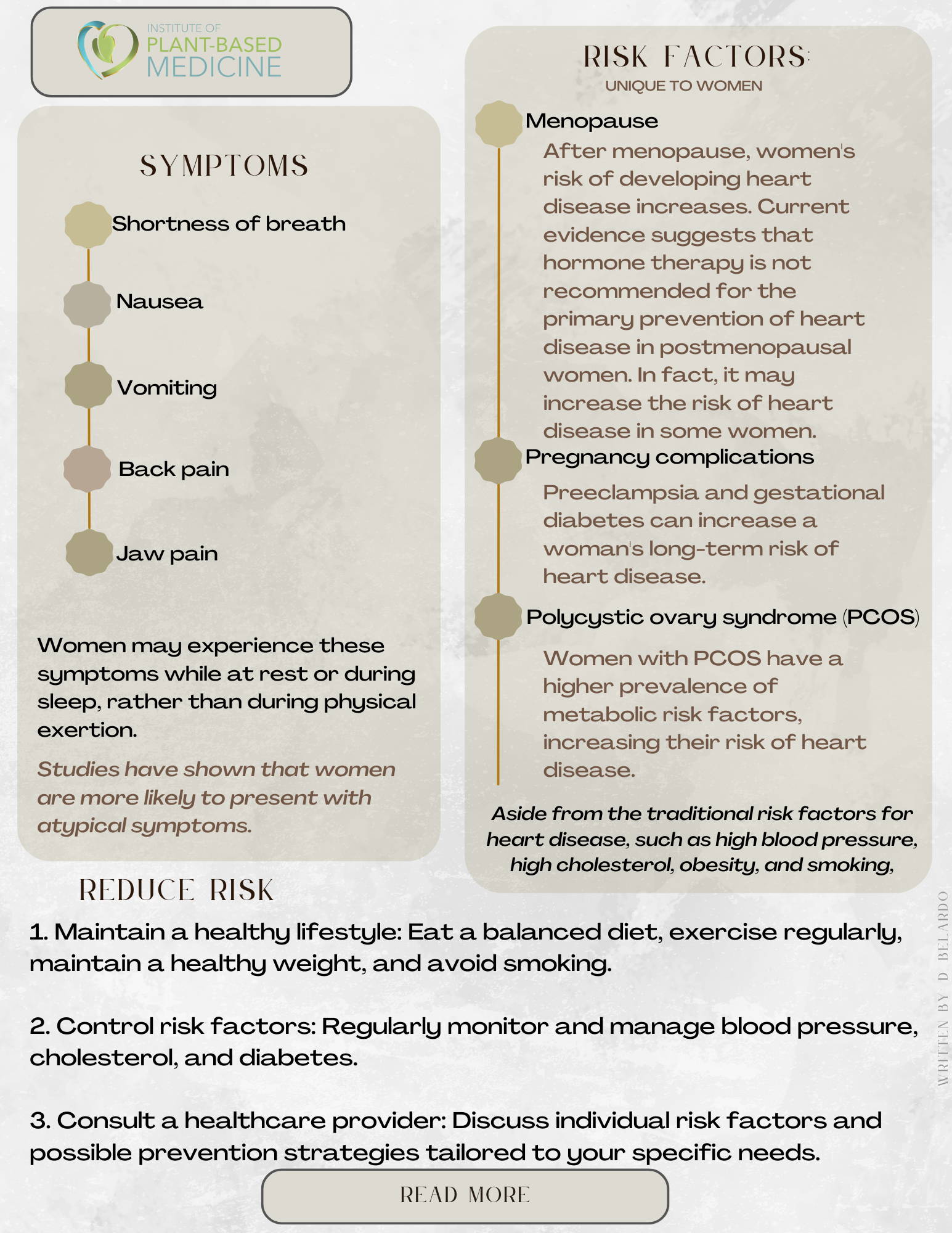No Products in the Cart
Heart disease is a leading cause of death for women worldwide (1). While both men and women can develop heart disease, the presentation of symptoms, risk factors, and outcomes may differ between the sexes. This article aims to provide an overview of heart disease in women and highlight the unique aspects of this condition in females.
Symptoms
The classic symptom of heart disease is chest pain, which may be experienced differently by women. Studies have shown that women are more likely to present with atypical symptoms, such as shortness of breath, nausea, vomiting, and back or jaw pain (2). Moreover, women may experience these symptoms while at rest or during sleep, rather than during physical exertion (3).

Understanding the unique aspects of heart disease in women is essential for timely diagnosis and effective treatment. Women should be aware of the atypical symptoms and unique risk factors associated with heart disease and take preventive measures to reduce their risk.
References:
1. World Health Organization. (2019). Cardiovascular diseases (CVDs). Retrieved from https://www.who.int/news-room/fact-sheets/detail/cardiovascular-diseases-(cvds)
2. McSweeney, J. C., et al. (2014). Women's early warning symptoms of acute myocardial infarction. Circulation, 130(16), 1396-1403. doi: 10.1161/CIRCULATIONAHA.114.008534
3. Canto, J. G., et al. (2012). Sex differences in symptom presentation associated with coronary heart disease. JAMA Internal Medicine, 172(18), 1345-1351. doi:10.1001/archinternmed.2012.3316
4. Matthews, K. A., et al. (2009). Are changes in cardiovascular disease risk factors in midlife women due to chronological aging or to the menopausal transition? Journal of the American College of Cardiology, 54(25), 2366-2373. doi: 10.1016/j.jacc.2009.10.009
5. Bellamy, L., et al. (2007). Pre-eclampsia and risk of cardiovascular disease and cancer in later life: Systematic review and meta-analysis. BMJ, 335(7627), 974. doi: 10.1136/bmj.39335.385301.BE
6. Wild, R. A., et al. (2000). Assessment of cardiovascular risk and prevention of cardiovascular disease in women with the polycystic ovary syndrome: A consensus statement by the Androgen Excess and Polycystic Ovary Syndrome (AE-PCOS) Society. The Journal of Clinical Endocrinology & Metabolism, 95(5), 2038-2049. doi: 10.1210/jc.2009-2724
7. American Heart Association. (2020). Lifestyle Changes for Heart Attack Prevention. Retrieved from https://www.heart.org/en/health-topics/heart-attack/life-after-a-heart-attack/lifestyle-changes-for-heart-attack-prevention
8. American Heart Association. (2020). Understand Your Risks to Prevent a Heart Attack. Retrieved from https://www.heart.org/en/health-topics/heart-attack/understand-your-risks-to-prevent-a-heart-attack
9. Manson, J. E., et al. (2013). Menopausal hormone therapy and health outcomes during the intervention and extended poststopping phases of the Women's Health Initiative randomized trials. JAMA, 310(13), 1353-1368. doi:10.1001/jama.2013.278040